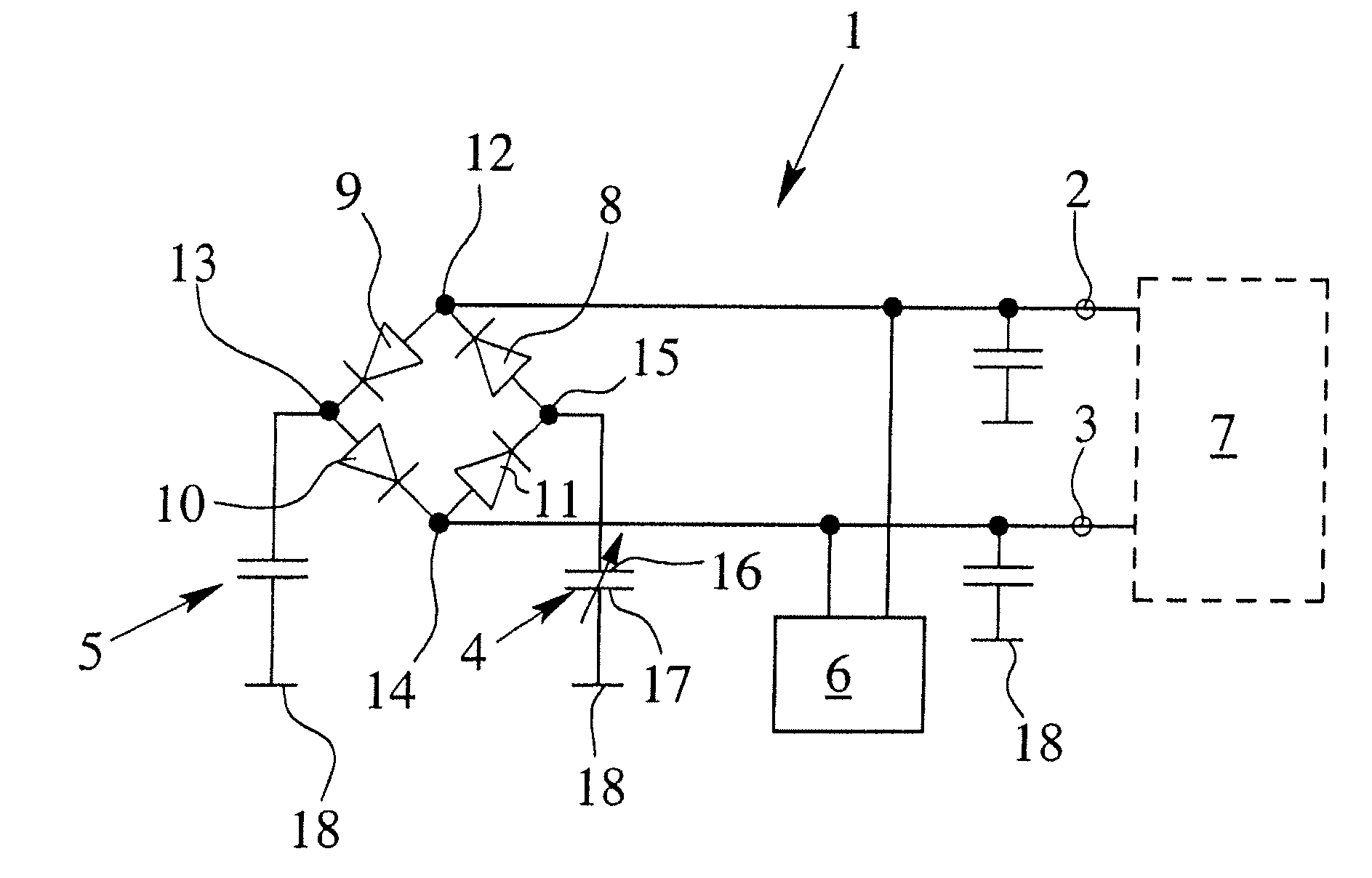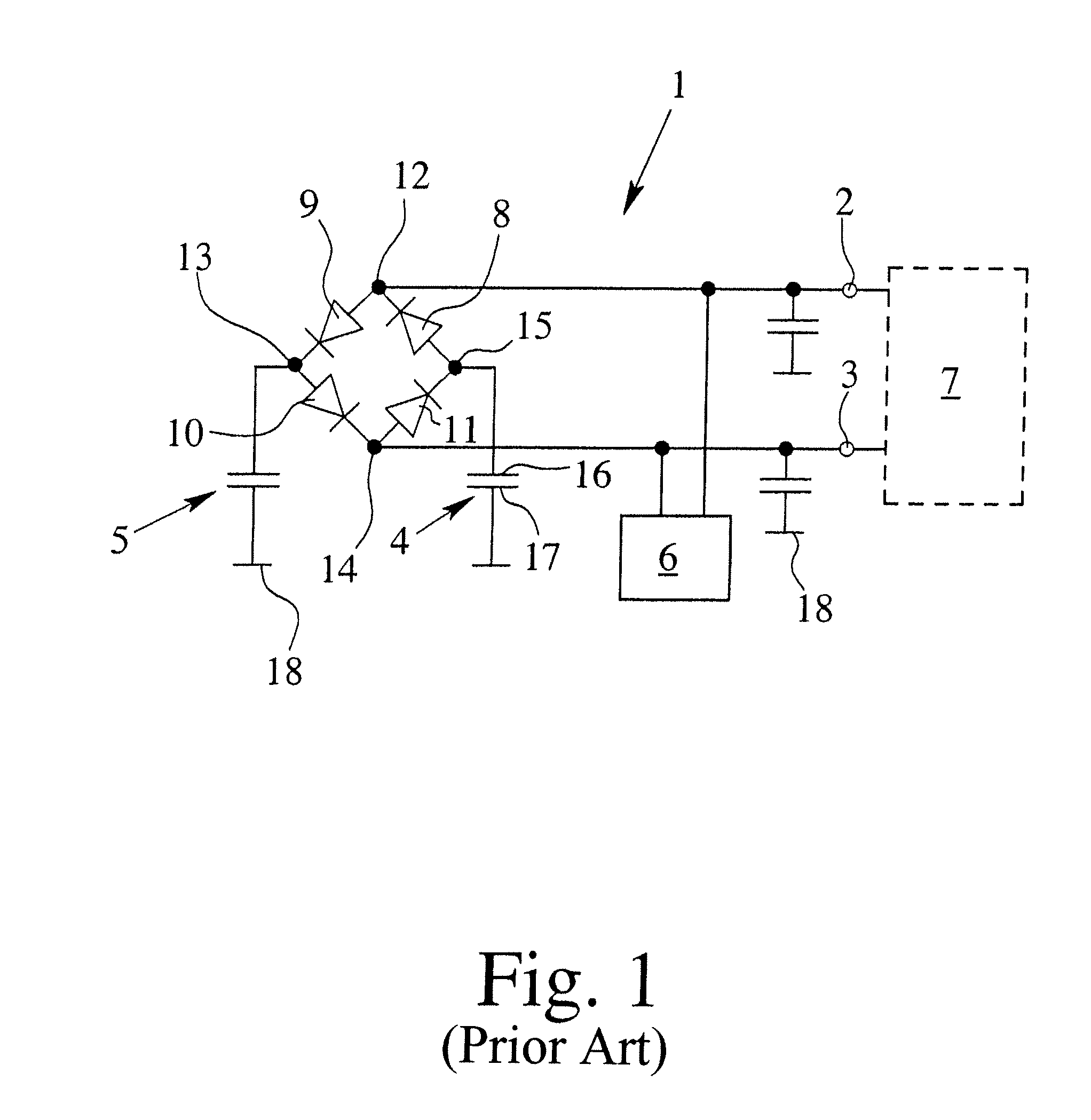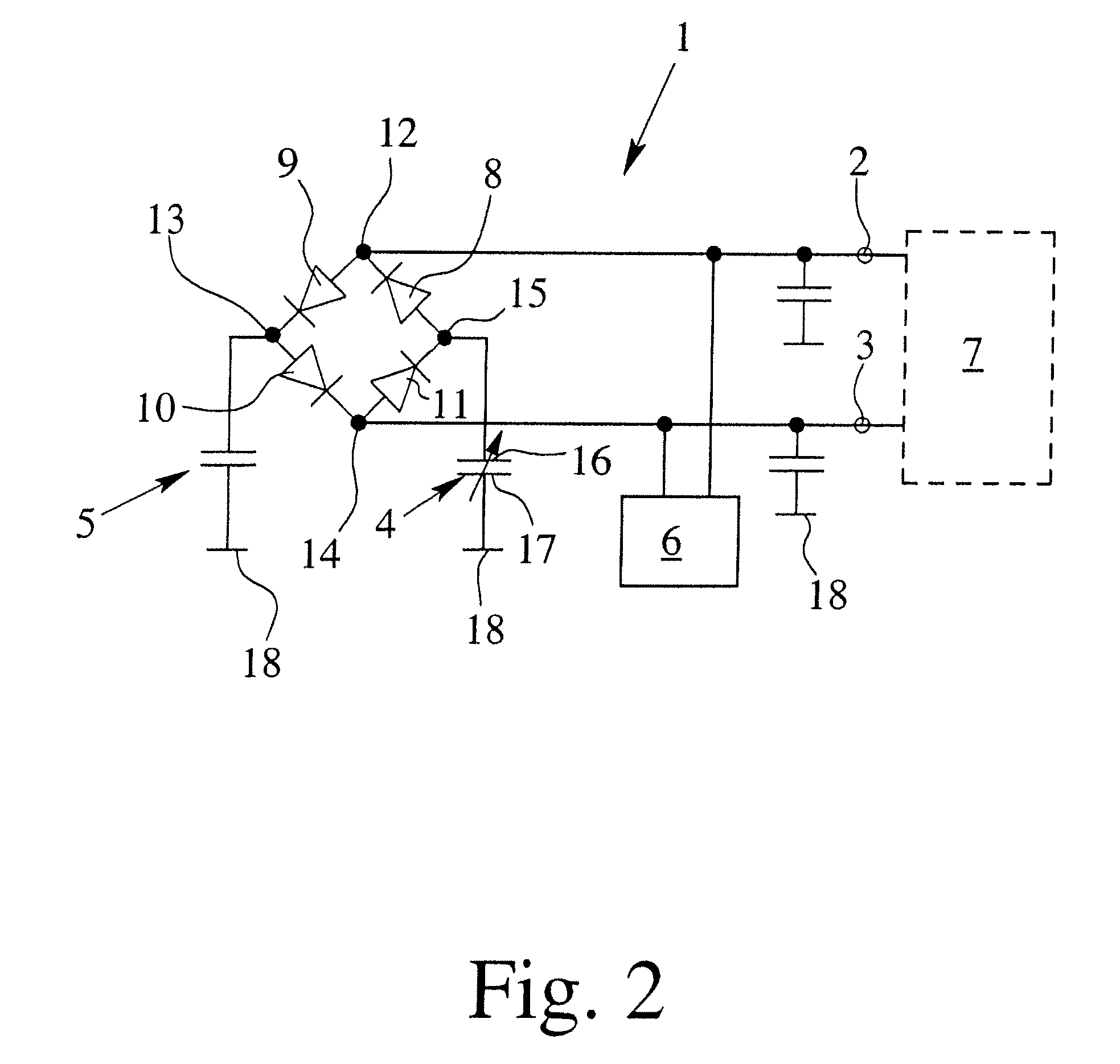Capacitive sensor
a capacitive sensor and sensor technology, applied in capacitance measurement, resistance/reactance/impedence, instruments, etc., can solve the problems of amplitude fluctuations, labor-intensive and costly circuit engineering, and inability to compare the difference of current voltage-convert currents,
- Summary
- Abstract
- Description
- Claims
- Application Information
AI Technical Summary
Benefits of technology
Problems solved by technology
Method used
Image
Examples
Embodiment Construction
[0050]FIG. 1 shows a capacitive sensor 1, as it is known from the prior art. On a first connection 2 and a second connection 3, the capacitive sensor 1 has a reference impedance that is configured as a—non-tunable—reference condenser 4 and a measuring condenser 5, an electrical alternating signal source 6, an analysis unit 7, as well as a diode ring that consists of four diodes 8, 9, 10, 11 that are connected one behind the other in series and in the same direction. In the embodiments according to FIGS. 1 to 6, the reference impedance is always embodied as a reference condenser 4.
[0051]The diode ring has a first connection 12 between the first diode 8 and the second diode 9, a second connection 13 between the second diode 9 and the third diode 10, a third connection 14 between the third diode 10 and the fourth diode 11, and finally a fourth connection 15 between the fourth diode 11 and the first diode 8. The first electrode 16 of the reference condenser 4 is connected to the fourth ...
PUM
 Login to View More
Login to View More Abstract
Description
Claims
Application Information
 Login to View More
Login to View More - R&D
- Intellectual Property
- Life Sciences
- Materials
- Tech Scout
- Unparalleled Data Quality
- Higher Quality Content
- 60% Fewer Hallucinations
Browse by: Latest US Patents, China's latest patents, Technical Efficacy Thesaurus, Application Domain, Technology Topic, Popular Technical Reports.
© 2025 PatSnap. All rights reserved.Legal|Privacy policy|Modern Slavery Act Transparency Statement|Sitemap|About US| Contact US: help@patsnap.com



